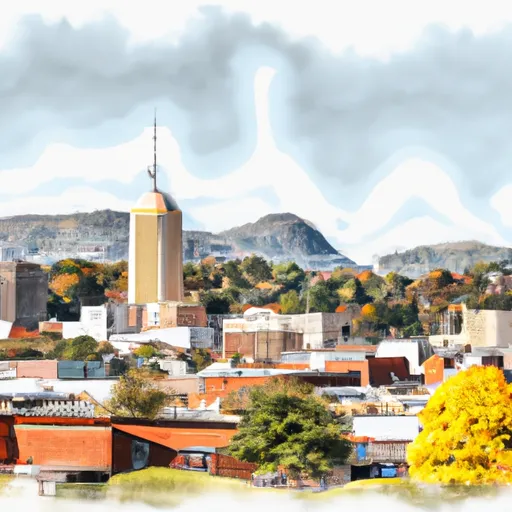-
 Snoflo Premium
Snoflo Premium
Get unlimited access to all our content
With no Ad interruptions! - Start Your Free Trial Login with existing account
Laurel-Bloomery
Eden Index
Climate
8.2
•
Recreation
5.9
•
Community
0.5
•
Safeguard
5.5/10

Laurel-Bloomery, Tennessee is a small rural community located in Johnson County, in the northeastern part of the state. The town experiences a humid subtropical climate characterized by warm and humid summers, mild winters, and ample rainfall throughout the year. Summers are typically hot with average temperatures ranging from the mid-80s to mid-90s Fahrenheit, while winters are mild with average temperatures in the 30s and 40s. Snowfall is relatively common in the winter months.
In terms of hydrology, Laurel-Bloomery is surrounded by numerous creeks and streams, including the Doe River, which flows through the area. These waterways provide opportunities for fishing, kayaking, and other water-based activities.
Outdoor enthusiasts in Laurel-Bloomery have access to a variety of recreational opportunities. The area is nestled in the Appalachian Mountains, offering stunning natural landscapes and hiking trails. Nearby Cherokee National Forest provides ample opportunities for camping, bird-watching, and wildlife viewing. Additionally, the Doe Mountain Recreation Area offers ATV and mountain biking trails, as well as horseback riding opportunities. Overall, Laurel-Bloomery and its surrounding areas offer a diverse range of outdoor activities for nature lovers and adventure seekers.
What is the Eden Index?
The Snoflo Eden Index serves as a comprehensive rating system for regions, evaluating their desirability through a holistic assessment of climate health, outdoor recreation opportunities, and natural disaster risk, acknowledging the profound impact of these factors on livability and well-being.
Climate Health Indicator (CHI): 8.2
Laurel-Bloomery receives approximately
1182mm of rain per year,
with humidity levels near 83%
and air temperatures averaging around
11°C.
Laurel-Bloomery has a plant hardyness factor of
6, meaning
plants and agriculture in this region thrive during a short period during spring and early summer. Most
plants will die off during the colder winter months.
By considering the ideal temperature range, reliable water supplies, clean air, and stable seasonal rain or snowpacks, the Climate Health Indicator (CHI) underscores the significance of a healthy climate as the foundation for quality living.
A healthy climate is paramount for ensuring a high quality of life and livability in a region, fostering both physical well-being and environmental harmony. This can be characterized by ideal temperatures, reliable access to water supplies, clean air, and consistent seasonal rain or snowpacks.
Weather Forecast
Streamflow Conditions
French Broad-Holston
Area Rivers
French Broad-Holston
Snowpack Depths
French Broad-Holston
Reservoir Storage Capacity
French Broad-Holston
Groundwater Levels
Recreational Opportunity Index (ROI): 5.9
The Recreational Opportunity Index (ROI) recognizes the value of outdoor recreational options, such as parks, hiking trails, camping sites, and fishing spots, while acknowledging that climate plays a pivotal role in ensuring the comfort and consistency of these experiences.
Access to outdoor recreational opportunities, encompassing activities such as parks, hiking, camping, and fishing, is crucial for overall well-being, and the climate plays a pivotal role in enabling and enhancing these experiences, ensuring that individuals can engage in nature-based activities comfortably and consistently.
Camping Areas
| Campground | Campsites | Reservations | Toilets | Showers | Elevation |
|---|---|---|---|---|---|
| Backbone Rock Rec Area | 50 | 2,231 ft | |||
| Lake James State Park | 20 | 1,246 ft | |||
| South Mountains State Park | None | 1,243 ft | |||
| Panther State Forest | None | 1,710 ft | |||
| Linville Falls - Blue Ridge Parkway | None | 3,220 ft | |||
| Panther WMA | 6 | 1,016 ft | |||
| Mortimer | 21 | 1,501 ft | |||
| Julian Price - Blue Ridge Parkway | 40 | 3,521 ft | |||
| Grindstone | 108 | 3,771 ft | |||
| Beartree | 90 | 3,128 ft |
Nearby Ski Areas
Catastrophe Safeguard Index (CSI):
The Catastrophe Safeguard Index (CSI) recognizes that natural disaster risk, encompassing floods, fires, hurricanes, and tornadoes, can drastically affect safety and the overall appeal of an area.
The level of natural disaster risk in a region significantly affects safety and the overall livability, with climate change amplifying these risks by potentially increasing the frequency and intensity of events like floods, fires, hurricanes, and tornadoes, thereby posing substantial challenges to community resilience and well-being.
Community Resilience Indicator (CRI): 0.5
The Community Resilience Indicator (CRI) recognizes that education, healthcare, and socioeconomics are crucial to the well-being of a region. The CRI acknowledges the profound impact of these elements on residents' overall quality of life. By evaluating educational resources, healthcare accessibility, and economic inclusivity, the index captures the essential aspects that contribute to a thriving community, fostering resident satisfaction, equity, and social cohesion.

